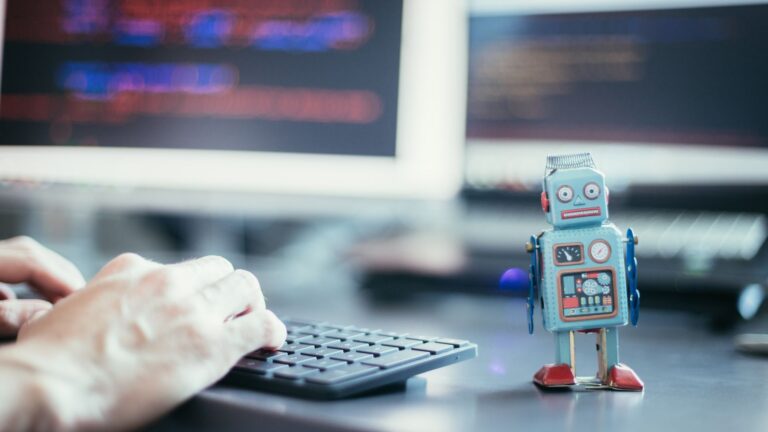INTRODUCTION
Artificial Intelligence (AI) has made significant strides in recent years, revolutionizing various industries and transforming the way we live and work. While AI has the potential to bring about numerous benefits, it also presents new risks and challenges, particularly in the realm of cybersecurity. As AI technologies continue to evolve, the potential for increased cybersecurity threats becomes a real concern. In this article, we will delve into the ways AI can exacerbate cybersecurity risks and discuss possible mitigation strategies to address these challenges.

THE GROWING ROLE OF AI IN CYBERSECURITY
AI has become an indispensable tool for organizations looking to bolster their cybersecurity defenses. Machine learning algorithms can analyze vast amounts of data to identify patterns and detect anomalies, enabling security teams to proactively respond to potential threats. AI-powered systems can also automate routine tasks, freeing up valuable resources to focus on more complex security issues.
However, as AI’s capabilities expand, so too does its potential for exploitation by malicious actors. Cybercriminals are increasingly harnessing the power of AI to conduct more sophisticated and targeted attacks, posing a significant challenge for organizations looking to safeguard their digital assets.
Increased Threats from AI-Driven Cyberattacks:
-
Enhanced Phishing Attacks: AI can be used to create highly convincing phishing emails that are difficult to distinguish from legitimate communications. By analyzing patterns in previous communications, AI can generate tailored messages that appeal to specific individuals, increasing the likelihood of a successful attack.
-
Intelligent Malware: Traditional malware relies on pre-programmed instructions, making it easier to detect and counter. AI-driven malware, on the other hand, can learn and adapt to its environment, allowing it to evade detection and circumvent security measures more effectively.
-
Automated Vulnerability Exploitation: AI can be used to rapidly scan networks and identify vulnerabilities that can be exploited by cybercriminals. By automating this process, attackers can conduct more extensive and targeted attacks, putting organizations at greater risk.
-
Deepfakes: The rise of deepfake technology, which uses AI to create realistic but fake videos and images, poses a significant threat to individuals and organizations alike. Deepfakes can be used to spread disinformation, manipulate public opinion, or conduct highly targeted social engineering attacks.
-
Autonomous Botnets: AI-powered botnets can be more resilient and difficult to dismantle compared to traditional botnets. These autonomous networks can adapt to changing conditions, making them a formidable threat to organizations.

MITIGATING THE RISKS OF AI-DRIVEN CYBERSECURITY THREATS
To address the growing risks associated with AI-driven cyberattacks, organizations must adopt a proactive and comprehensive approach to cybersecurity. This includes:
- Investing in AI-Driven Security Solutions: As cybercriminals leverage AI to enhance their attacks, organizations must also harness the power of AI to bolster their defenses. This includes investing in advanced security solutions that utilize machine learning and AI to detect and counter threats more effectively.
- Strengthening Security Awareness Training: To combat the increasing sophistication of AI-driven attacks, organizations must prioritize employee training and awareness. This includes educating employees on the latest tactics employed by cybercriminals, as well as best practices for identifying and reporting potential threats.
- Conducting Regular Security Assessments: Regular security assessments can help organizations identify vulnerabilities in their networks and systems, allowing them to proactively address potential risks. This should include penetration testing, vulnerability scanning, and risk assessments to ensure a robust security posture.
- Developing Incident Response Plans: Having a well-defined incident response plan is crucial for organizations looking to minimize the impact of a cyberattack. This should include clear guidelines for identifying, containing, and mitigating threats, as well as procedures for recovering from an attack and restoring normal operations.
-
Collaborating with Other Organizations and Law Enforcement: Cyber threats are constantly evolving, and no organization can combat them alone. Building partnerships with other organizations, industry groups, and law enforcement agencies can help foster a collaborative approach to cybersecurity. By sharing information about threats, best practices, and mitigation strategies, organizations can collectively strengthen their defenses against AI-driven cyberattacks.
-
Focusing on Cyber Hygiene: Ensuring that basic security measures are in place can significantly reduce the risk of a successful cyberattack. This includes keeping software and systems up-to-date, implementing strong password policies, enforcing multi-factor authentication, and regularly backing up critical data. A strong foundation in cyber hygiene can go a long way in mitigating the risks associated with AI-driven threats.
-
Embracing a Zero-Trust Security Model: Adopting a zero-trust security model can help organizations better protect their networks and data. This approach assumes that no user or device can be trusted by default, and requires continuous verification of identities and access permissions. By implementing a zero-trust model, organizations can more effectively defend against AI-driven cyberattacks that exploit vulnerabilities in traditional perimeter-based security models.
-
Exploring AI Ethics and Regulations: As AI continues to advance, there is a growing need for ethical guidelines and regulations to prevent its misuse. Organizations must stay informed about emerging policies and legal frameworks that address the responsible use of AI. By engaging in discussions around AI ethics and actively advocating for responsible practices, organizations can help shape the future of AI in a manner that minimizes potential risks.

Artificial Intelligence, while offering numerous benefits and advancements, can also bring increased threats in cybersecurity. As AI-driven cyberattacks become more sophisticated and prevalent, organizations must be proactive in addressing these risks. By investing in advanced security solutions, promoting security awareness, and fostering collaboration among stakeholders, organizations can better safeguard their digital assets and mitigate the potential dangers posed by AI-driven cyber threats. The key lies in striking a balance between leveraging the power of AI for positive outcomes while staying vigilant against the potential risks it poses to cybersecurity.



